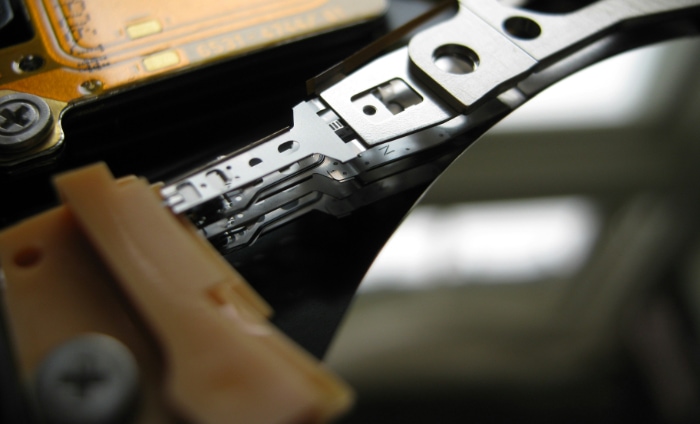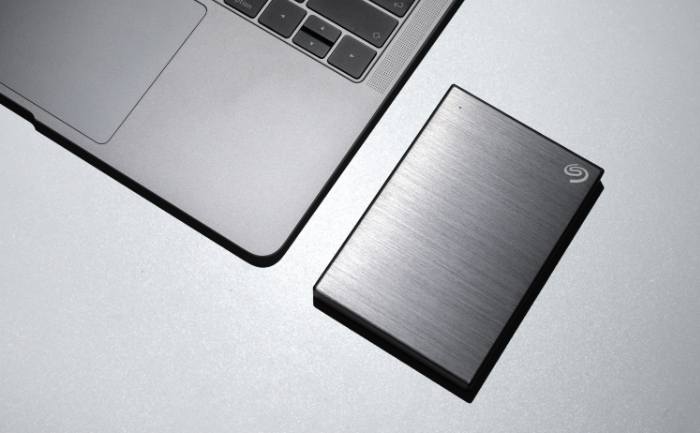Disk Cloning vs. Disk Imaging: Behind the Backup Curtain

Data loss is a nightmare scenario for anyone who relies on digital information—be it personal memories captured in photos and videos, or crucial business documents that are the lifeline of your enterprise. Fortunately, technology offers robust solutions to safeguard against such disasters: disk cloning and disk imaging.
Both methods come with their distinct features, advantages, and scenarios where they shine the most.
Understanding Disk Cloning
Disk cloning is a process that creates an exact copy of a computer’s storage drive. This method is ideal for transferring all the data, including the operating system and applications, from one drive to another.
It’s a popular choice for upgrading hard drives or setting up multiple computers with identical configurations.
What is Disk Cloning?
Disk cloning involves copying the contents of one storage drive to another, making an exact byte-for-byte replica. This process includes all files, settings, and installed programs, ensuring the clone drive is immediately operational without the need for reinstallation of the operating system or applications.
How Disk Cloning Works
The disk cloning process can be straightforward but requires careful attention to detail:
- Select a cloning software: There are many tools available, both free and paid, that can clone drives.
- Choose the source and destination drives: The source is the drive you want to clone, and the destination is where you want to copy the data to.
- Start the cloning process: This can take some time, depending on the amount of data and the speed of the drives.
- Swap the drives (if necessary): In cases of upgrading, you may need to replace the old drive with the new clone.
Key Benefits of Disk Cloning
- Time Efficiency: Saves considerable time by copying everything at once, avoiding the need to reinstall the operating system and applications.
- Ease of Upgrade: Simplifies the process of upgrading to a larger or faster drive by making an exact copy.
- Immediate Backup Recovery: The clone drive can be used immediately if the original drive fails, minimizing downtime.
Common Use Cases
- System Upgrades: When moving to a larger or faster hard drive, cloning makes the transition seamless.
- Full System Backup: For creating a fully operational backup that can be quickly deployed.
- Deploying Multiple Computers: In environments where multiple machines require the same setup, cloning is an efficient method to ensure uniformity across devices.
Exploring Disk Imaging
Disk imaging is a comprehensive method for backing up a computer’s storage drive, capturing a snapshot of all its data at a specific point in time. Unlike disk cloning, which creates a direct copy of the drive, disk imaging saves the entire drive’s contents as a single, compressed file.
This technique is invaluable for restoring a system to a previous state, performing system recovery, or facilitating data migration.
What is Disk Imaging?
Disk imaging creates a mirror image of your drive, encompassing all files, system settings, and applications. The image file can then be stored on a different drive or medium and used to restore the original system’s state.
This method is highly effective for comprehensive backups or system recovery.
The Disk Imaging Process
Creating a disk image involves several key steps:
- Choose imaging software: Select a reliable tool that suits your needs, with many options available catering to different preferences.
- Define the scope: Decide whether to image the entire disk or only specific partitions.
- Initiate the imaging process: Run the software to create the image, which will be saved in a specified location.
- Storage: Save the disk image to a secure location, ideally on an external drive or cloud storage, for safety.
Advantages of Disk Imaging
- Comprehensive Backup: Captures everything on the drive, ensuring no data is overlooked.
- Space Efficiency: Compresses the drive’s contents into a single file, saving storage space.
- Versatile Restoration: Allows for full restoration or retrieval of specific files from the image.
- Disaster Recovery: Ideal for recovering from hardware failure, malware attacks, or corrupted data.
Typical Scenarios for Disk Imaging
- System Recovery: Restoring a system to its state at the time of the last image in case of failure or corruption.
- Data Migration: Moving the entire system setup to a new PC or drive without reinstalling the OS and applications.
- Archival Purposes: Keeping historical snapshots of a system for compliance or record-keeping.
A Closer Look at Disk Cloning and Disk Imaging
Choosing between disk cloning and disk imaging for data backup and system recovery requires understanding the nuances of each method. While both serve the critical purpose of safeguarding your digital data, they do so in ways that cater to different needs and scenarios.
Differences in Process and Outcome
Disk cloning involves creating a one-to-one copy of a drive, resulting in a second drive that’s immediately bootable and ready to use as if it were the original. In contrast, disk imaging captures a snapshot of a drive at a particular moment, saving it as a compressed file that can be stored anywhere and used to restore the original drive’s state at the time of the image.
Speed and Storage Efficiency
Cloning a disk is generally faster because it’s a direct copy process without the need for compression. However, it requires a destination drive with capacity equal to or larger than the source.
Disk imaging, while potentially slower due to compression, results in a smaller file that’s easier to store on various media types or cloud storage, offering greater flexibility in backup management.
Convenience and Versatility
Disk cloning shines in scenarios requiring immediate use of the new drive, such as upgrading to a larger or faster disk. It’s straightforward: clone, swap, and you’re up and running.
Disk imaging is more versatile, allowing for regular backups without needing an identical spare drive. Images can be stored compactly and used to restore specific files or the entire system, providing a robust solution for disaster recovery.
Recovery and Backup Management
In terms of recovery, a cloned drive can be used instantly, making it perfect for rapid replacements. Disk images require restoration software to unpack the image and restore the disk’s contents, which can be a bit slower but offers more flexibility, such as restoring to different hardware or extracting individual files.
Ideal Use Cases
- Disk Cloning is best for hardware upgrades, setting up multiple identical systems, or when you need an exact functional replica of your drive immediately available.
- Disk Imaging excels for ongoing backup strategies, disaster recovery planning, and situations where storage space and flexibility are paramount.
Technical Considerations

When deciding between disk cloning and disk imaging, it’s crucial to consider the technical aspects that can influence your choice. Factors such as the software required, hardware compatibility, the impact on system performance, and network bandwidth requirements play significant roles in determining the most suitable method for your needs.
Software Requirements
Both disk cloning and disk imaging require specific software tools designed for these purposes. The market offers a wide range of options, from open-source solutions to premium software packages with advanced features.
When selecting a tool, consider its compatibility with your operating system, ease of use, and the availability of support or documentation to troubleshoot potential issues.
Hardware Compatibility
Hardware compatibility is another critical factor. Ensure that the software you choose supports the types of drives (HDDs, SSDs) and interfaces (SATA, NVMe) you plan to use.
Additionally, for disk imaging, verify that the destination storage medium has enough capacity to store the compressed image files, especially if you’re conducting regular backups.
System Performance Impact
Both methods can impact system performance during the backup or cloning process. Disk cloning typically requires the system to be offline or in a bootable environment, which means downtime but no performance degradation during the operation.
Disk imaging, on the other hand, can be performed while the system is running, potentially slowing down operations depending on the software’s efficiency and the system’s workload.
Network Bandwidth Considerations
If you’re planning to store your backups or cloned images on network-attached storage (NAS) or over the cloud, consider the network bandwidth requirements. Disk imaging files, though compressed, can be large and may take significant time to upload or download over limited bandwidth connections.
Cloning, usually done directly to another drive, doesn’t typically involve network usage, but if remote cloning is a necessity, bandwidth is a factor.
Choosing the Right Tools
Making the right choice involves balancing these technical considerations with your specific needs:
- For quick hardware upgrades or replacements, disk cloning with a tool that supports direct disk-to-disk action is ideal.
- For comprehensive backup strategies that involve regular updates and minimal storage space usage, disk imaging software with efficient compression and incremental backup capabilities will serve you better.
Strategic Implications for Users
Choosing between disk cloning and disk imaging isn’t just a matter of technical preference; it also involves strategic planning for data management and recovery. This choice can significantly affect how individuals and businesses prepare for data loss incidents, manage system upgrades, and ensure business continuity.
Long-Term Maintenance and Disaster Recovery Planning
The approach you take to backing up and restoring data can have a profound impact on long-term maintenance and disaster recovery efforts. Disk imaging, with its ability to create compressed snapshots of a system at different points in time, offers a versatile foundation for a comprehensive disaster recovery plan.
It allows for regular, scheduled backups that take up less storage space and provide a range of restore points. On the other hand, disk cloning is ideal for creating immediate, one-to-one copies of drives, which can be crucial for rapid system recovery in environments where downtime must be minimized.
Scalability and Changing IT Environments
As IT environments grow and change, the need for scalable and flexible backup solutions becomes increasingly important. Disk imaging shines in this area, as it easily adapts to different hardware setups and can be used to deploy multiple configurations across a varied landscape of devices.
Cloning, while efficient for creating identical copies for uniform hardware setups, might not be as flexible when it comes to scalability and adaptation to new technologies.
Integrating Backup Solutions into Data Protection Strategies
A well-rounded data protection strategy incorporates both proactive and reactive measures. Disk cloning, for instance, can be part of a proactive strategy to ensure that critical systems have an immediate fallback option in case of hardware failure.
Disk imaging, with its incremental backup capabilities, fits into a more reactive approach, offering multiple restore points that can be crucial after data corruption or in the event of a ransomware attack. Balancing these approaches based on the specific risks and needs of your operation is essential.
Cost and Resource Allocation
The choice between disk cloning and imaging also has implications for cost and resource allocation. Disk imaging, with its efficient use of storage through compression, can help save on storage costs over time, especially when using cloud storage solutions.
Disk cloning may require more upfront investment in additional hardware, particularly if multiple clones are needed for redundancy or for equipping multiple systems.
Conclusion
Choosing the right method between disk cloning and disk imaging depends on individual needs, ranging from immediate system upgrades and replacements to comprehensive, long-term backup and disaster recovery strategies. Each approach offers unique advantages: disk cloning excels in creating exact, ready-to-use copies of drives, while disk imaging stands out for its flexibility, efficient storage use, and the ability to restore systems to specific points in time.
Technical considerations, such as software requirements, hardware compatibility, and the impact on system performance, play a crucial role in determining the most suitable option. Furthermore, strategic implications, including long-term maintenance, scalability, and integration into broader data protection strategies, should guide users in making informed decisions.
By weighing these factors, individuals and organizations can ensure their data management practices are robust, flexible, and aligned with their overall objectives, thereby safeguarding their digital assets against the unpredictable nature of data loss and system failures.


